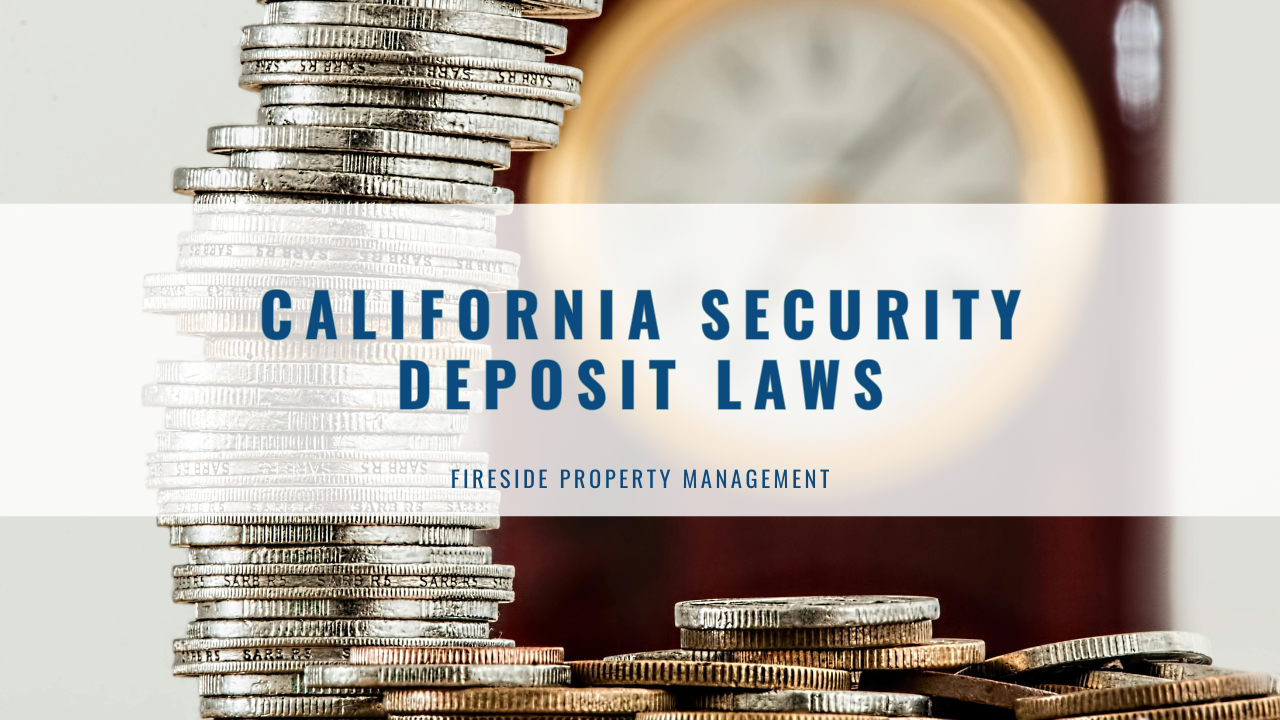California law grants landlords certain rights and responsibilities regarding security deposits. Among the rights you have is making certain deductions to the security deposit. Such as, when the tenant defaults on rent payment, causes damage exceeding wear and tear, or leaves the property in a dire state of uncleanliness.
When it comes to responsibilities, you must ensure you abide by all security deposit rules. Failure to abide by the rules in the collection and handling of a tenant’s deposit can lead to legal repercussions.
As a landlord in California, the following are all the key basics of the law that you should know.
Security Deposit Limit
As of July 1, 2024, California law limits residential security deposits to a maximum of one month's rent, regardless they're furnished units or unfurnished units. An exception of this month's rent rule exists for small landlords—those who own no more than two residential rental properties totaling up to four rental units—allowing them to charge up to two months' rent as a security deposit.
However, this exception does not apply if the tenant is an active service member; in such cases, the deposit is capped at a month's rent. These regulations to one month's rent aim to standardize security deposit practices and provide clarity for both landlords and tenants. This is the law limiting security deposits to the amount of a single month's rent is a cornerstone of the law.
Storing a Tenant’s Security Deposit
In California, while there is no specific requirement for landlords to store a tenant’s security deposit in a separate account or interest-bearing account, they must handle the security deposit responsibly and return any unused portion or security deposit interest after the tenant vacates.
.jpg)
Landlords are required to provide an itemized list of any deductions for repairs or cleaning costs beyond normal wear and tear within 21 days of the tenant moving out. If any portion of the deposit is retained, including security deposit interest, landlords must include receipts or invoices as proof of expenses to avoid small claims court.
Security Deposit Receipt
Under California law, landlords are not required to provide tenants with a formal receipt for the security deposit, but it is considered good practice. Documenting the amount, date of payment, and any terms related to the deposit helps both parties maintain a clear record and avoid misunderstandings.
The landlord should include the security deposit terms in the lease or rental agreement, specifying the amount collected and the conditions for potential deductions upon move-out.
By keeping clear documentation, landlords and tenants can establish a transparent, mutually understood process for the security deposit, particularly when it comes time for any refunds or deductions.
Security Deposit Deductions
Property owners may only deduct from a tenant’s security deposit for specific, allowable reasons: unpaid rent, cleaning to return the rental unit to its original state (excluding ordinary wear and tear), and repairs for damage beyond regular wear. This doesn't change whether they're furnished or unfurnished units.
Normal wear and tear includes natural aging and minor issues resulting from typical use, such as light carpet wear, faded paint, small nail holes, and slight scuffing on floors of the rental unit. These issues do not justify deductions to the security deposit.

Damage exceeding normal wear and tear, however, includes issues caused by neglect, misuse, or accidental damage beyond ordinary use. Examples include broken windows, large holes in walls, stained or ripped carpet, missing fixtures, or appliance damage due to improper use.
California law requires landlords to provide an itemized list of deductions with receipts or invoices within 21 days of move-out if they retain any part of the deposit.
Walk-Through Inspections in California
In California, tenants have the right to request a walk-through inspection before moving out to identify any issues that could lead to security deposit deductions. This inspection, commonly called a pre-move-out inspection, allows the tenant an opportunity to address any potential problems, such as cleaning or minor repairs, before vacating.
California law requires the landlord to notify the tenant of their right to this inspection, which must be conducted no earlier than two weeks before the end of the lease. During the inspection, the landlord identifies any issues that may result in deductions beyond regular wear, providing an itemized list afterward.
This list helps tenants understand what needs attention to avoid deductions to the security deposit. Importantly, if additional damage is discovered after the inspection or during the final move-out, landlords can still make those deductions from the security deposit.
Returning a Tenant’s Deposit in California
In California, landlords must return a tenant’s security deposit within 21 days of move-out, minus any allowable deductions for unpaid rent, cleaning, or repairs beyond wear and tear. When returning security deposits, you need to return the entire security deposit or an itemized statement for the deductions by documenting the damage done to your rental properties.

If deductions are made, the landlord is required to provide an itemized statement detailing the amounts withheld, along with receipts or invoices for repairs exceeding $125. This itemized statement must be included with the remaining deposit refund when a tenant moves.
If the landlord needs additional time for complex repairs, they may provide a good-faith estimate within the 21-day period, followed by actual receipts within 14 days of completion. Failure to follow these requirements could result in legal consequences, including potential penalties, giving tenants added protection and ensuring fair handling of their security deposits.
Conclusion
Your first step to a successful landlording journey is understanding your legal obligations. The security deposit laws are just a portion of the landlord-tenant laws you must familiarize yourself with when renting out a property in California.
If you have any questions or need expert property management help, look no further than Fireside Property Management. With our full-service property management services, you can rest assured of peace of mind and optimal ROI. What are you still waiting for, give us a call now!
Disclaimer: Please note that the information provided in this blog is intended for general guidance and should not be considered as a replacement for professional legal advice. It is important to be aware that laws pertaining to property management may change, rendering this information outdated by the time you read it.



